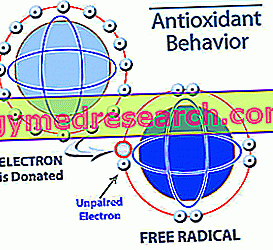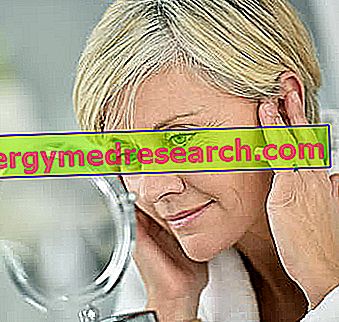

The oxidation process is one of the most common and frequent causes of alterations, even substantial, of the color, aroma, consistency, taste and nutritional content of foods, during the processes of production, distribution and preparation of the same.
Antioxidants have the function of preventing or interrupting the oxidative process, significantly prolonging the shelf-life of foods and acting accordingly as preservatives.
Antioxidants can be classified, chemically, into:
- Primary and Secondary .
Primary antioxidants are reducing compounds that oxidize instead of food, reacting themselves with free radicals and converting them into more stable compounds (an example is given by vitamin E); the secondary ones, on the other hand, are compounds capable of reducing the primary antioxidants after they have reacted with free radicals, restoring them and making sure that they continue to perform their function (an example is given by vitamin C against E).
- Enzymatic (endogenous) and Non Enzymatic (exogenous).
Enzyme antioxidants are compounds produced by the body to defend itself from the attack of free radicals; among these we can remember the catalases, the glutathione peroxidase and the superoxide dismutase (SOD), while among the non enzymatic antioxidants, then introduced into the body through nutrition, we can remember the vitamins A, C, E, the polyphenols (divided to them time in phenolic and flavonoid acids), carotenoids etc.
We can also distinguish antioxidants according to their origin, subdividing them into 3 groups:
- Natural → Vitamins C and E belong to this category (ascorbic acid and tocopherol respectively). When it is possible to do so, we try to privilege this type of antioxidants, because in addition to being considered safe in food, they also have anticarcinogenic effects and inhibit oxidative reactions which, in excess, are harmful to the body.
- Natural-identical → these antioxidants are obtained by chemical synthesis by copying the formula of natural ones. They are economically less expensive compounds. An example is the chemical synthesis of ascorbic acid.
- Synthetics → are antioxidants that do not exist in nature, and are the most contested and discussed, despite being approved at European level. An example p given by BHA and BHT.
List of antioxidants allowed in food
| E300-E304 | E306-E309 | E310 | E311 | E312 | E313 | E314 | E315 |
| E316 | E319 | E320 | E321 | E322 | E325-E27 | E330-E333 | E334-E337 |
| E338 | E339 | E340 | E341 | E342 | E343 | E350 | E351 |
| E352 | E353 | E354 | E355 | E356 | E357 | E363 | E365-E367 |
| E370 | E375 | E380 | E381 | E385 | E387 | E388 |




